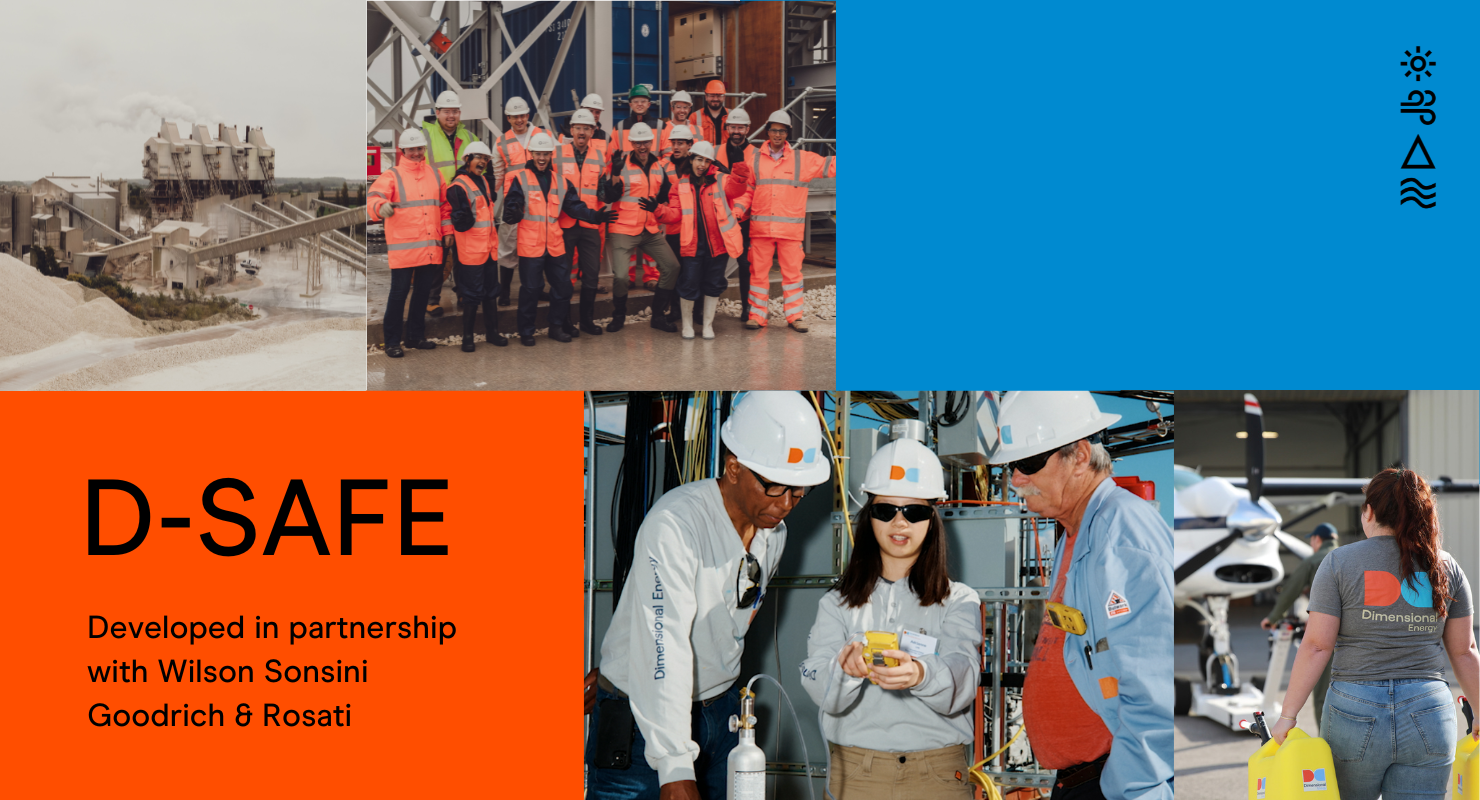
We are pleased to welcome a new crew of ground-breakers and market-makers from the 19 companies in Elemental’s Cohort 9.
It seems fitting that we cross the 100-company threshold for our portfolio here at the outset of what must be a decade of climate action. Because the price of keeping the status quo grows steeper every year, from the human and economic toll of climate-related disasters, fires, heatwaves, and other environmental stresses to the jobs left on the table by not accelerating towards a carbon-free, regenerative economy.
We’re grateful to partner with this latest group of innovators and, with a portfolio that’s now 117 companies strong, work together to commercialize an abundance of solutions to reverse climate change — starting today. In total, we’re funding Cohort 9 with over $7M to anchor $15M of projects, which are designed to scale 10x within two years.
“These are technologies that are primed for deployment and growth. We love investing at these meaningful, and highly dynamic, moments in a company’s growth cycle because they are where the ideal becomes real,” says our CEO Dawn Lippert. “Cohort 9 has strong momentum toward climate impact, with significant annual revenues and an average of $7M raised. Their cap tables indicate that new investors are entering climate-tech, and we’re seeing a ramp toward a new inflection point for the market.”
What makes this cohort special?
It begins with our due diligence process — where we started with nearly 800 applicants from 54 countries around the world. We select a subset of companies to go through technical and financial due diligence, product evaluation, reference checks, commercial analysis, and most importantly getting to know the founding teams on a deeper level. We go through this effort to ensure the entrepreneurs are positioned to make significant impact, can add value to each other along the journey, and are set up to reach new commercial inflection points through our work together.
Cohort 9 is our most diverse to date. Half of the companies have a female founder. And nearly half have a founder who identifies as a person of color, with a third founded by someone who identifies as Black or indigenous. We know that when teams are more reflective of the communities and customers they serve, they are much more likely to achieve the equitable outcomes that are critical to solving climate change.
As always, equity and access is at the forefront of our mission to fund critical solutions for climate change, particularly in communities affected by the compounding effects of pollution, vulnerable infrastructure, and limited economic opportunities. To meet this challenge climate solutions must include both technology and community expertise. Entrepreneurs may have half the solution, and communities often have the other half. Together they can be transformative.
“Startups are at an advantage in that they are early in their business’ lifecycle and can focus on equity both in their workforces (equity in) and in how they deploy their products or services (equity out) and scale those practices as they grow,” says Sara Chandler, our Managing Director of Equity and Access. “We’re looking forward to partnering deeply with Cohort 9 companies and their community partners to help improve existing water, food, circular economy, energy and mobility systems.”
And finally, the twin threats of a pandemic and economic calamity made this a year unlike any other in memory. We emphasized COVID resiliency when selecting companies, weighing the ability to thrive (or pivot) during the pandemic as well as the ability to help respond and recover from it. We believe that Cohort 9 companies and projects collectively present a massive job creation opportunity, especially for people in frontline communities.
Quick reminder: you can meet all of the Cohort 9 companies at TEDxElemental on October 28 at 12pm PT / 9am HT. The stories behind why these founders started their companies were so powerful that we are hosting our first TEDx to share them with our whole community. We hope that you will join us to listen, learn, and see why we were so inspired to deploy their technologies.
And now, please help us welcome:
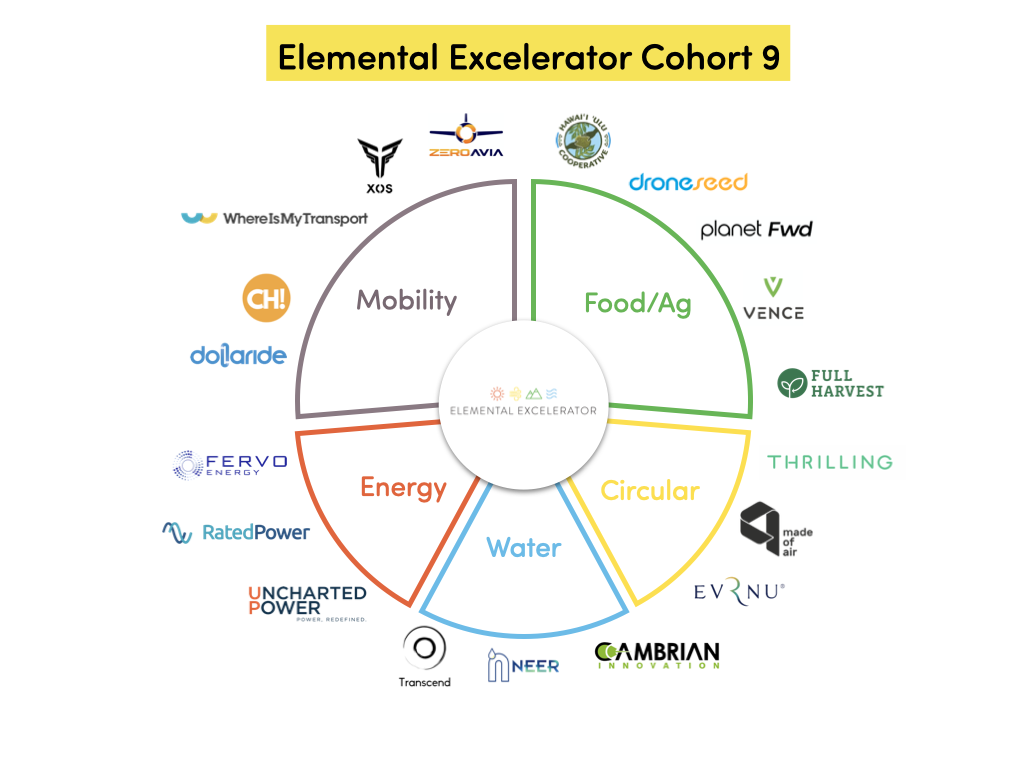
CIRCULAR ECONOMY
“Across different industries and in the minds of consumers, we’re finally seeing circular technologies and practices getting the recognition they deserve. The companies in our latest cohort are creating carbon-negative materials, extending the lifecycle of products already in use, reducing food waste, and putting an end to fast fashion. We are eager to help them bend our linear, extractive system to one that is more circular — a critical and often overlooked step in combatting climate change.” — Danya Hakeem, Director of Innovation, Agriculture & Circular Economy.

Evrnu | DEMONSTRATION TRACK
Upcycling textile waste in collaboration with leading brands and supply chain partners
Why do we love them?
If you’ve ever hated to part with that tattered pair of jeans because you know there’s still good life left in them somewhere, Evrnu’s got a far better solution than the trash heap. The company’s regenerative NuCycl™ technologies upcycle textile and apparel waste by dissolving cotton and regenerating the molecules into a new, even stronger fiber. Beyond giving your jeans a second chance at life, this opens up an entirely new, sustainable garment recycling supply chain. Since textiles are dumped in landfills at a rate of one garbage-truck full every single second and the carbon footprint of making a pair of jeans is similar to driving 80 miles (not to mention the fact that every year people throw away roughly $400 billion worth of clothing), the environmental benefits are evident. With decades’ worth of technical and industry experience on the team, and customers such as Adidas, Stella McCartney, Levis, and Target, Evrnu is poised to heal the environmental damage caused by decades of fast fashion.
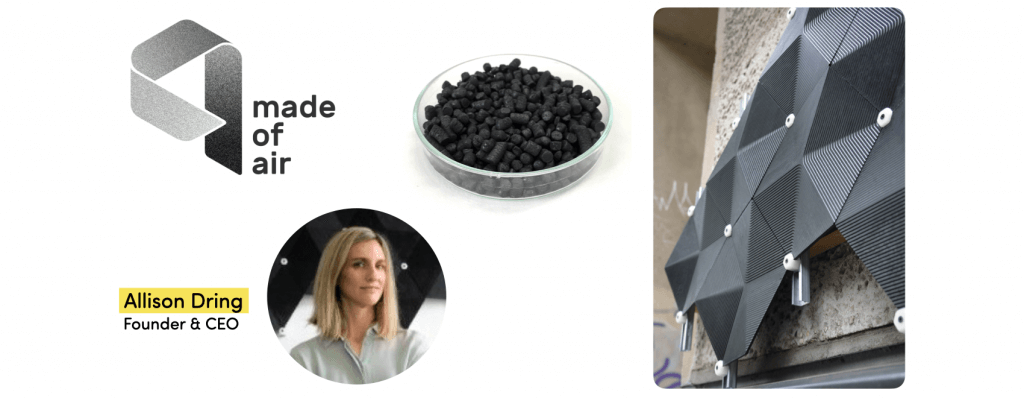
Made of Air | GO-TO-MARKET TRACK
Carbon negative materials
Why do we love them?
As the global population grows, so too will the need to make more products and structures to support all those people. Reimagining the resource-intensive processes and materials used to make all that stuff — especially GHG-emitting steel, concrete, and plastic — will be one of the defining opportunities of the coming decades. Made of Air is ready for that challenge, with a carbon-negative thermoplastic material that can permanently sequester CO2 from the atmosphere and actively reverse climate change, made with a process that actually produces a surplus of usable heat and electric energy. Made of Air’s biochar-based materials, which are made out of waste biomass (like tree clippings or crop residue) and can be used in everything from buildings to furniture to automotive parts, represent a durable alternative to the plastics that big oil companies are betting on to fill the gap as cars and utilities go electric.

Thrilling | EQUITY & ACCESS TRACK
Online marketplace for secondhand stores
Why do we love them?
The apparel and footwear industries are responsible for more greenhouse gas emissions — more than 8% of global climate impacts — than all international flights and maritime shipping combined. Resale models that ensure we get more use out of the products and materials we produce are a vastly underutilized avenue for slashing emissions. In the case of secondhand shopping, that’s largely due to the technical and logistical frustrations that store owners face in uploading the hundreds or thousands of unique items in their inventory. Currently, only 5% of secondhand inventory is online, which gives Thrilling a massive opportunity to usher in a new era of circular fashion. With the COVID-19 pandemic posing an existential threat to small businesses, more and more brick and mortar stores are urgently looking for ways to engage their customers online. Thrilling’s community-minded approach gives secondhand stores, which are often owned by women and minorities, a foothold in the innovation economy with access to new revenues and customers in new market.
ENERGY
“While we are witnessing the devastation that climate change is already laying on our most vulnerable communities, there are plenty of reasons to remain optimistic. The energy companies in our latest cohort have developed innovative approaches to sustainable urban development, maximizing renewable power generation, and aiding in a just transition to a clean-energy workforce. We are excited to partner with these companies actively scaling up technologies that can transform our communities by offering access to clean, resilient, and affordable power for all.” — Nneka Uzoh, Director of Energy Innovation
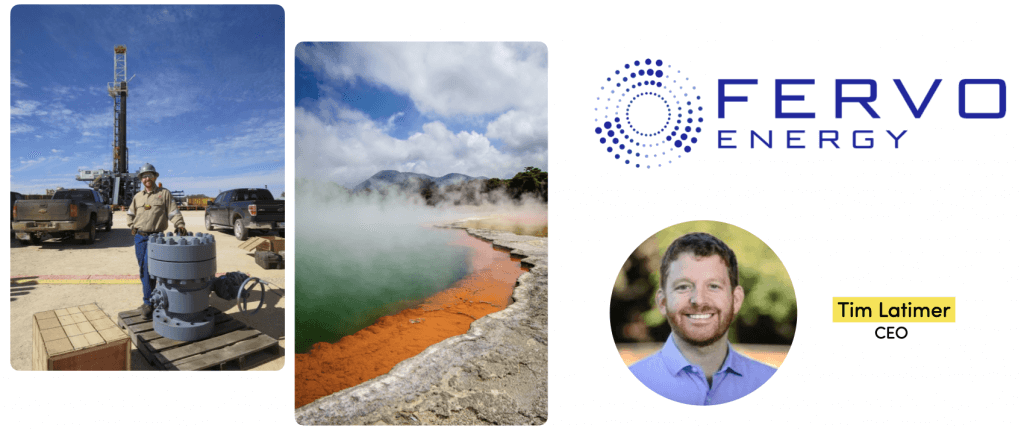
Fervo Energy | EQUITY & ACCESS
Scalable and affordable geothermal power for 100% clean energy
Why do we love them?
Geothermal power, which currently accounts for less than 1% of utility-scale electricity generation in the U.S., is poised for a breakthrough. Sourced from heat generated by the Earth’s core, geothermal energy clean, available 24-7, entirely homegrown, and virtually unlimited. But that’s just one piece of why we’re so excited by Fervo’s approach to rapidly scaling and increasing the productivity of geothermal wells. As demand drops out and the economics stop adding up for the fossil fuel industry, geothermal presents an opportunity to immediately transition the tens of thousands of Americans employed by oil and gas companies into a clean-energy workforce. Fervo Energy’s CEO Tim Latimer, who was formerly a shale gas drilling engineer, understands that many of the same skills and even equipment used in oil-field drilling can, instead of producing hydrocarbons, be repurposed overnight to tap into geothermal wells and produce abundant, carbon-free electricity.

RatedPower | DEMONSTRATION
Software to optimize the design of utility-scale photovoltaic plants
Why do we love them?
One of the surest and simplest paths to widespread renewable energy is to get more solar panels in more places. RatedPower helps do just that, by making it vastly simpler and faster to design utility-scale photovoltaic plants. From topographic and meteorological analyses to equipment selection and highly detailed designs, the company’s pvDesign software pushes the bounds of what technology can do, accomplishing in minutes what used to take a team of people weeks to accomplish. This makes it simple for developers to compare different designs and arrive at the best plant configuration, ultimately making solar more profitable for their customers. RatedPower’s technology can also model bifacial solar modules — in short, taking advantage of the light reflected from the ground to the rear side. In all, pvDesign sets the standard for solar plant design software, and will accelerate the deployment of solar energy worldwide.
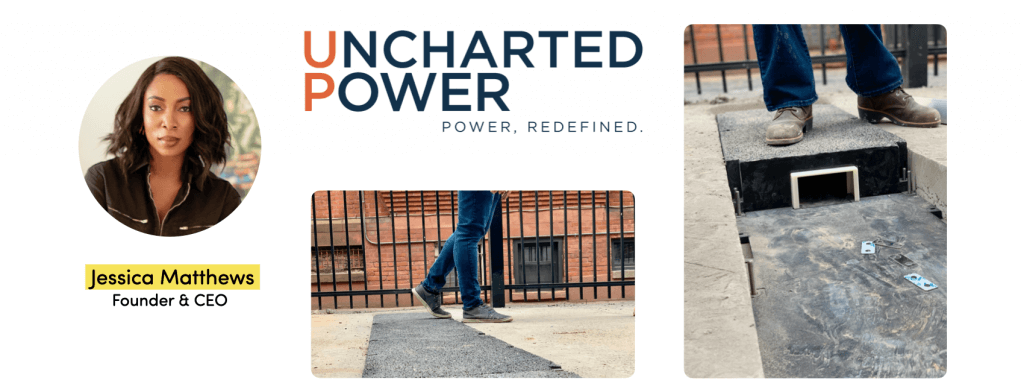
Uncharted Power | GO-TO-MARKET
Smart, modular pavers for integrated infrastructure development
Why do we love them?
The ubiquitous overhead power lines that crisscross our communities — despite their vulnerability to fallen trees, fires, or other hazards — largely owe their existence to historical inertia. When our electrical infrastructure was first developed in the early 20th century, there was no way to safely bury high voltages underground. And while underground wiring technologies do exist today, it’s often expensive to install and difficult to access for service and repairs. Uncharted Power threads this needle with its tech-ready, modular paver that offers easy access to both power and data, incorporating power wiring, fiber-optics, antennas, sensors, and other hardware. And since it can be efficiently expanded into areas with historically underdeveloped infrastructure, the company’s system can become a critical building block for sustainable urban development. At a time when increasing fires, hurricanes, and other natural catastrophes are damaging the electrical grid, Uncharted Power’s resilience-focused solution can protect utility assets and enable faster repairs.
FOOD & AGRICULTURE
“The COVID-19 pandemic has exposed deep cracks in our food system, spotlighting how fragile our global supply chain is in both certain and uncertain times. We are excited to support companies building a more resilient food and agriculture system through climate-friendly ingredient sourcing, reforestation, regenerative grazing, and replacing imports with indigenous crops.” — Danya Hakeem, Director of Innovation, Agriculture & Circular Economy.

DroneSeed | EQUITY & ACCESS
Drone-based reforestation
Why do we love them?
In recent months, California experienced 5 of the top 6 wildfires in its history, and at least 5 million acres have burned in California, Oregon, and Washington so far this year. As the planet continues to warm and the size, severity, and frequency of wildfires grows, those records may be just the beginning. DroneSeed’s post-fire reforestation technology can help reverse this accelerating decline of forests. And since many wildfire-ravaged regions can be difficult to access in person, drones can do it faster, cheaper, and safer than manual labor. In addition to the drones themselves, the company has created an innovative seed vessel that boosts seed survival rate using amendments to reduce the normally required 1-3 years of tree growth in a nursery to 30-60 days. On top of the company’s technical strengths, DroneSeed’s reforestation solution helps create higher-paying and more sustainable jobs — including drone pilots, field operators, and maintenance technicians — to supplement the often seasonal nature of manual work in rural communities.
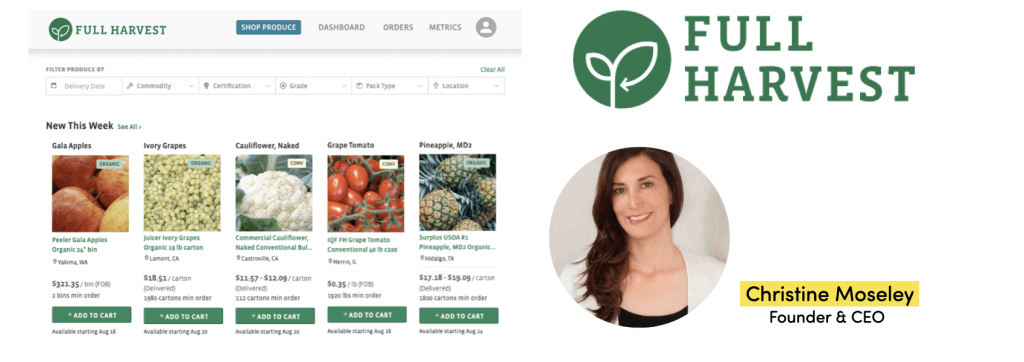
Full Harvest | EQUITY & ACCESS
The business marketplace for ugly & surplus produce
Why do we love them?
Making sure food makes it from farm to fork is one of the most potent ways we can reduce climate change. Why is that? Whether it’s rotting on farms, spoiling during distribution, or generating methane in landfills, food that goes uneaten contributes roughly eight percent of global greenhouse gas emissions, and Project Drawdown ranked eliminating food waste at #3 on its list of Top 10 Solutions. On top of eliminating emissions, ensuring that the food we produce gets eaten also means we’re not squandering the massive amounts of water, energy, land, labor, and money that goes into the food system. Full Harvest tackles this problem at its very source — targeting on-farm produce loss — with a marketplace that connects growers and buyers and ensures that aesthetic objections like bruises or discoloring don’t stand in the way of 100% full harvests. And with the COVID-19 pandemic wreaking havoc on supply chains linking farmers and the food service industry, Full Harvest’s marketplace has proven to be an effective tool in solving for rapid shifts in supply and demand. Their mission is to serve those hardest hit including smaller, minority-owned farms through their marketplace, and bringing more healthy food options to students and families in need.
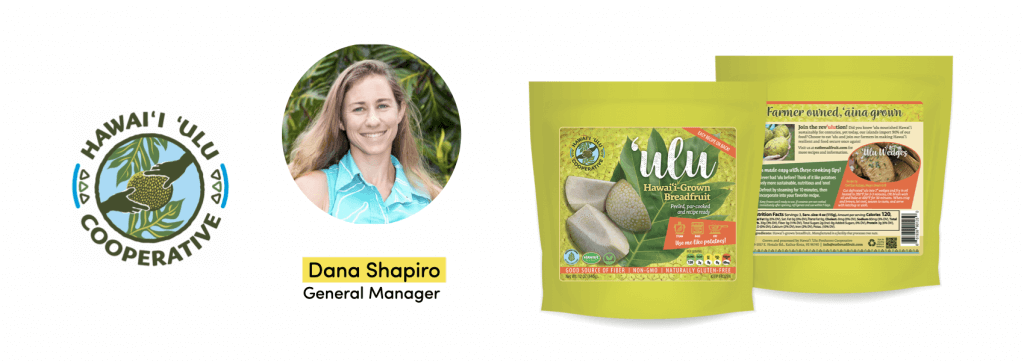
Hawaiʻi ʻUlu Cooperative | GO-TO-MARKET
Revitalizing Hawaiʻi’s indigenous food systems
Why do we love them?
‘Ulu is a mighty fruit. Also known as breadfruit, it’s one of the highest yielding fruit plants out there, as a single tree produces an average of 300 pounds of fruit per year, exceeding common staples like rice, corn, and wheat. It’s also a climate-friendly option that thrives across diverse microclimates, making it an ideal staple in regions experiencing mounting stresses in a changing climate. And finally, it’s a culturally significant “canoe crop” that can help Hawaii rebalance a longstanding reliance on imported food and drive resilience and growth in the local food system. The Hawaiʻi ʻUlu Cooperative is building a farmer-owned, competitive supply chain and market for local breadfruit and other regenerative crops. By restoring ‘ulu agroforestry systems through a cooperative framework, it can reverse the economic and environmental damage caused by more than a century of monocrop plantations and other degrading agricultural practices. And proving the model in Hawaiʻi can show other locations that breadfruit trees are a powerful way to sequester carbon, create habitat, support watershed functionality, and provide myriad other ecosystem services.

Planet FWD | GO-TO-MARKET
Ingredient platform for climate-friendly foods
Why do we love them?
Regenerative agricultural practices are attracting more and more attention for their ability to reduce GHG emissions and sequester carbon in healthier soils. And food companies are taking note — General Mills, one of the biggest food companies on the planet, is aiming to make regenerative agriculture common practice on 1 million acres by 2030. However, the market for food products sourced with regenerative ingredients remains underdeveloped and hindered by fragmented supply chains. Planet FWD arms food brands that want to create products for climate-conscious consumers with reliable data and a platform for sourcing regenerative ingredients, which in turn incentivizes more farmers to convert to regenerative practices. In addition to proving consumer demand for climate-friendly food, Planet FWD’s platform also has the potential to help farmers foster resiliency, diversify their customers, and scale their operations. On top of all of that, we love that Planet FWD’s founder Julia Collins deliberately secured 99.5% of the company’s seed funding from people of color and/or women. Diversifying our agricultural system through diversity for the win!
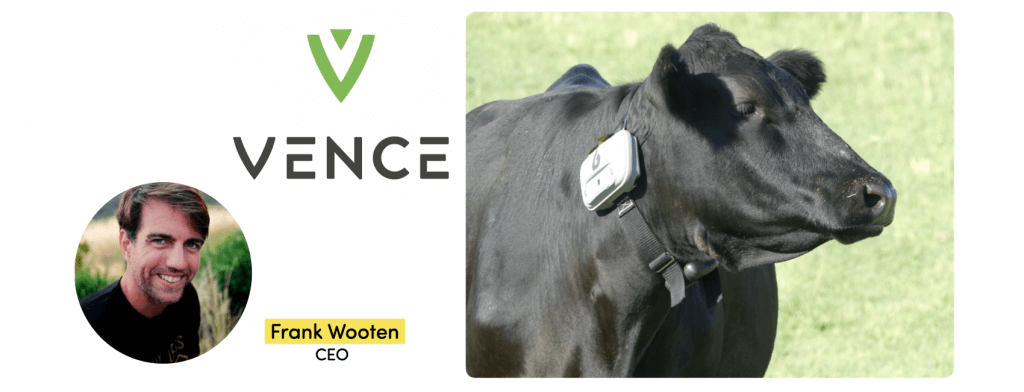
Vence | DEMONSTRATION
Virtual livestock management
Why do we love them?
While cows are often unfairly maligned as a major climate problem, the reality is that managed grazing has been identified as a significant contributor to carbon sequestration. It’s all about how and where the cows graze. Soil becomes degraded and exhausts its ability to sequester carbon when cattle munch the same area over and over. However, implementing more holistic and rotational grazing practices can recreate the migratory patterns that created healthy grasslands to begin with. This isn’t a big secret for ranchers, but the lack of animal control, land management, and data-driven insights make it difficult for many livestock operations to avoid overgrazing. Vence’s virtual fencing solution helps them optimize their grazing practices at a fraction of the cost of traditional fencing. And it also frees up all that fence-building and repairing time for working on other land management and conservation projects.
MOBILITY
“The mobility companies in our ninth cohort are tackling critical issues ranging from weaning off fossil fuels, green job creation and increasing mobility in transit deserts. More and more, the underlying focus of mobility innovation lies in understanding how actual people — not just cars — move. We see amazing opportunity for this cohort to improve the health and economic opportunity of people in cities everywhere, which will be especially important as we recover from the effects of COVID-19 and fully re-enter our public spaces.” — Danielle J. Harris, Director of Mobility Innovation
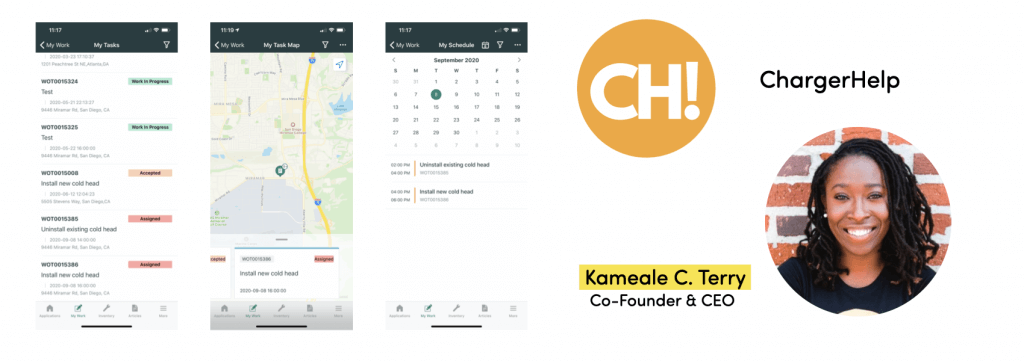
ChargerHelp! | GO-TO-MARKET
On demand repair of electric vehicle charging stations
Why do we love them?
We love electric vehicles. We love reliable EV chargers. We love improving and expanding our charging infrastructure. And we love green job creation. ChargerHelp! blends all of those ingredients into a community-centered cleantech elixir. Currently, 1 in 10 EV charge stations is offline due to software issues, and it can take months to get them fixed. That leads to an unreliable charging network, a lot of frustrated EV drivers, and even more squandered EV-curious customers. With a mobile app that dispatches a community’s local workforce of maintenance technicians to troubleshoot and resolve issues, ChargerHelp! can reduce the offline time down to 2 days. Improving the reliability of our charging infrastructure by engaging with local workforces will lead to more electric vehicles for more drivers in more places, accelerating the overall growth of EV adoption.

Dollaride | GO-TO-MARKET
Digital rails for transit-starved communities
Why do we love them?
Dollaride is the app-based rideshare option for the millions of Americans who aren’t adequately served by public transit, and find taxis, Ubers, and Lyfts too costly for their daily needs. Even in New York, a city with one of the world’s biggest transit systems, over 600k people live in “transit deserts” and have to spend hours each day commuting to work. Since the 1980s, cash-based, micro-transit systems of dollar vans have been easing the pain of commuting for disenfranchised people. Dollaride is digitizing and mobilizing these networks, helping local drivers grow their ridership, and creating an affordable solution with reliable routes for riders. The company also provides a subscription service for businesses looking to provide employees with an alternative way to get to and from the office. By optimizing existing informal transit and reducing overall vehicle miles traveled and associated greenhouse gas emissions, Dollaride is an important piece of minimizing the climate impacts from urban mobility.
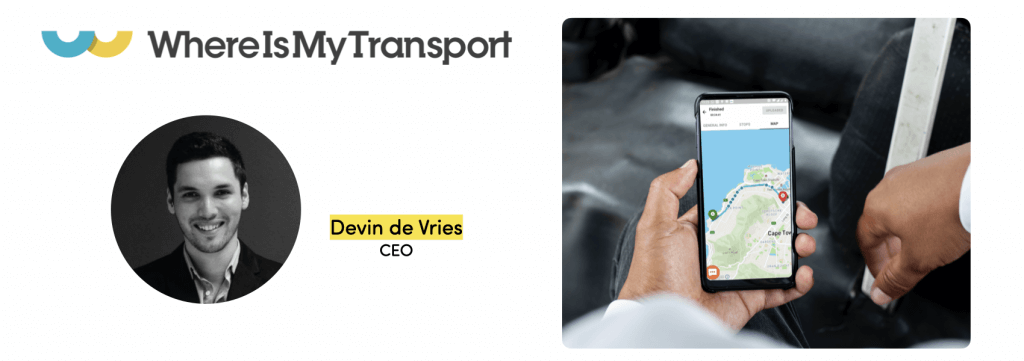
WhereIsMyTransport | DEMONSTRATION
Mapping formal and informal public transport in emerging market-cities
Why do we love them?
Basic freedom of movement is a key element for people’s economic and social empowerment, and a backbone for sustainable urban development. While technology has little trouble mapping public transit services in cities like London or New York, the mobility ecosystems across much of the world are far more complex. In a single city, while tens of thousands of privately run cars and buses can transport hundreds of thousands of riders per day, there is often little or no information on their operations, leaving riders with a daily struggle for a predictable commute. WhereIsMyTransport recruits a local workforce and pulls data from a variety of sources to map these informal transit networks and get riders the right information at the right time. Having mapped nearly one million kilometers in 27 countries and 4 continents, WhereIsMyTransport is managing the movement data of blossoming megacities often overlooked by competitors. And with a body of knowledge centered on the actual patterns of riders, WhereIsMyTransport can better inform decision-making for development organizations and businesses, while making commuting easier, more reliable, and more accessible for millions of people.
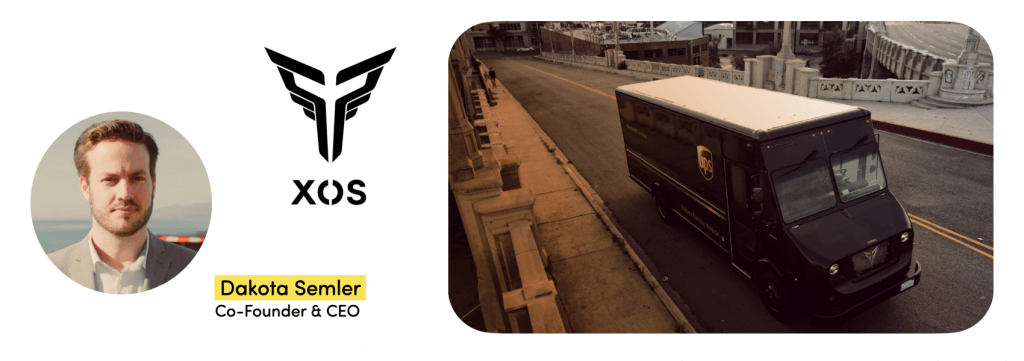
Xos Trucks | EQUITY & ACCESS
Electric mobility solutions for fleets
Why do we love them?
Xos is focused on decarbonizing the entire freight transportation sector. Trucking is one of the largest sources of air pollutants, accounting for nearly 25% of the greenhouse gas emissions in the ground transportation sector (which is itself responsible for more than double the emissions from aviation). While innovation has driven EV adoption in passenger cars, heavier commercial vehicles have demanding requirements and need solutions that are optimized for them. Xos makes it both easy and cost-effective for fleets to transition to zero-emissions vehicles. This is a critical issue now in California, which recently announced that by 2045 every new truck sold will be zero-emission. With this clean-truck standard and Xos’ solution, we can reverse the plague of dirty air in frontline communities that are often pocketed near freight corridors and heavy truck traffic.
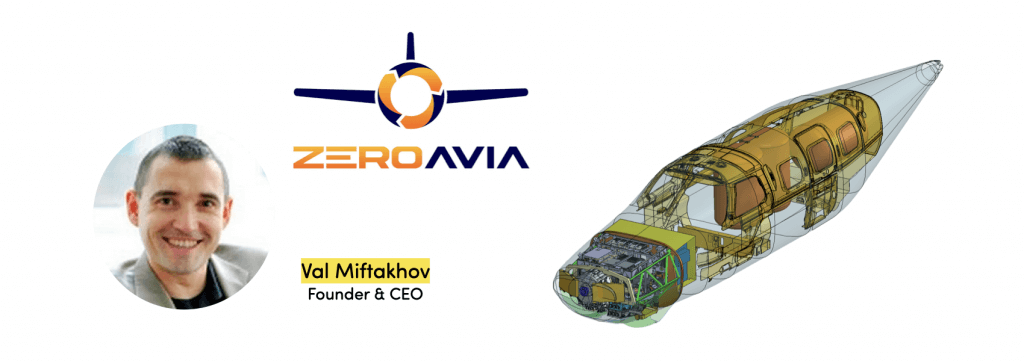
ZeroAvia | DEMONSTRATION
Hydrogen-electric aviation
Why do we love them?
Aviation might be the single thorniest issue to tackle in our quest to reduce and eventually eliminate our dependence on fossil fuels. Not only does the aviation industry account for a huge chunk of overall GHG emissions (more than 1 gigaton of CO2 in 2019), the actual climate impact of those emissions in the sky are 2-4x the same ground-level emissions. ZeroAvia is developing the world’s first practical zero-emission aviation powertrain, renewably powered by hydrogen fuel cells. While battery-powered planes will soon begin reshaping shorter-range flights (evidenced by the demonstration project we’re funding with Ampaire), hydrogen-electric aircraft can achieve 500+ mile range, with a first commercial offering coming from ZeroAvia in 2023. Oh, and ZeroAvia was founded by Val Miftakhov, who led another company in our portfolio, eMotorwerks, to an acquisition with Enel. One notable trend we’ve been seeing across the climate-tech space recently is more and more founders who are bringing the wisdom and experience they gained from one successful startup to another. We are thrilled to support Val again as our first repeat entrepreneur.
WATER
“The collective need for clean and safe water will only grow more pressing as our water infrastructure faces compounding stresses from both age and a changing climate. This year’s cohort of water companies demonstrated a clear capacity for resiliency and innovation, focusing on important issues such as making the existing infrastructure more resilient, extending its reach through decentralized treatment models, and redefining the system itself from the ground up. We see significant opportunity to provide equitable access to clean water in all communities while engaging with local labor workforces and supporting economic growth in the sector.” — Kim Baker, Director of Water Innovation

Cambrian Innovation | DEMONSTRATION
Recovering sustainable resources from wastewater
Why do we love them?
Decentralized water treatment solutions help communities better tackle their place-based environmental challenges, especially those beyond the reach of traditional wastewater approaches. That’s an acute issue in Hawaii, where there are nearly 90,000 cesspools still in use that need to be replaced. Cambrian Innovation’s technology is perfectly suited for this task and many others like it across the world. Not only do Cambrian’s on-site treatment systems recover clean water from wastewater, they can operate off grid and in some circumstances create energy. This intersection of clean water and clean energy offers a rare win-win for water-stressed regions that have little to no extra energy to run high-demand water treatment systems. And with a water-energy purchase agreement (WEPA) model that allows customers to pay on a per-gallon basis, Cambrian also eliminates many of the bottom-line question marks that have all too often stymied successful implementation of decentralized wastewater treatment technologies.
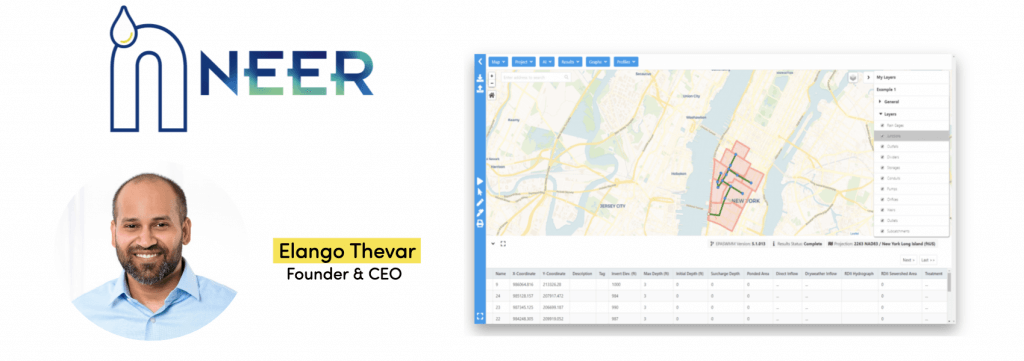
NEER | GO-TO-MARKET
Redefining water infrastructure through machine learning
Why do we love them?
Across the country, we’re spending more than $10 billion per year on repairs and maintenance for our aging and failing water infrastructure. However, water operators have little awareness of what will fail or when it will happen. With a single software solution for water, sewer, and stormwater systems that monitors operational efficiency, identifies infrastructure issues, and predicts failures, NEER can help them stabilize pipes and other infrastructure before they deteriorate. NEER’s founder, Elango Thevar, has spent his career consulting with utility clients on this very problem and built the company to provide them with unmatched intelligence in an increasingly crowded field of asset management software. And since the company combines systems-wide modeling and predictive management into a single platform, NEER simply does more at a lower price point than its competitors. NEER’s digital solution can help cities and small communities alike reverse the decades-long trend of crumbling water infrastructure and improve their ability to fulfill one of their most fundamental and vital public services.

Transcend | DEMONSTRATION
Automated design software for water treatment facilities
Why do we love them?
Innovation in the water industry is critical for minimizing the stresses of climate change. But when incorporating innovative solutions is a time-consuming, expensive process for engineering firms — which are often the gatekeepers for what gets proposed and ultimately installed — it’s only natural that they will minimize “newness” in the design process. Transcend addresses this root cause that stifles innovation in the built environment for water and wastewater treatment, and resets the foundation for new technologies in this space. The team is comprised of water experts and technical leaders who understand where the bottlenecks have been stuck or years, and are poised to execute a new path in treatment facility design. Moreover, Transcend’s approach at rebuilding the design process from the ground up doesn’t just free engineers from spinning their wheels through repetitive, manual tasks. It also provides a launchpad where the end customer — water utilities — can become more actively engaged in trying out a variety of scenarios and ultimately having more control in driving the outcomes they want.
What’s next for Cohort 9?
Over the next couple weeks we’ll be introducing these companies to our ecosystem of partners, investors, coaches, and community leaders. And just as importantly, they’ll begin teaching and learning from each other to create deeper connections, stronger businesses, and greater collective impact.
Be sure to tune into TEDxElemental on October 28 to meet Cohort 9 here at the beginning of their journey with us at Elemental. We couldn’t be more excited for you to meet them.



